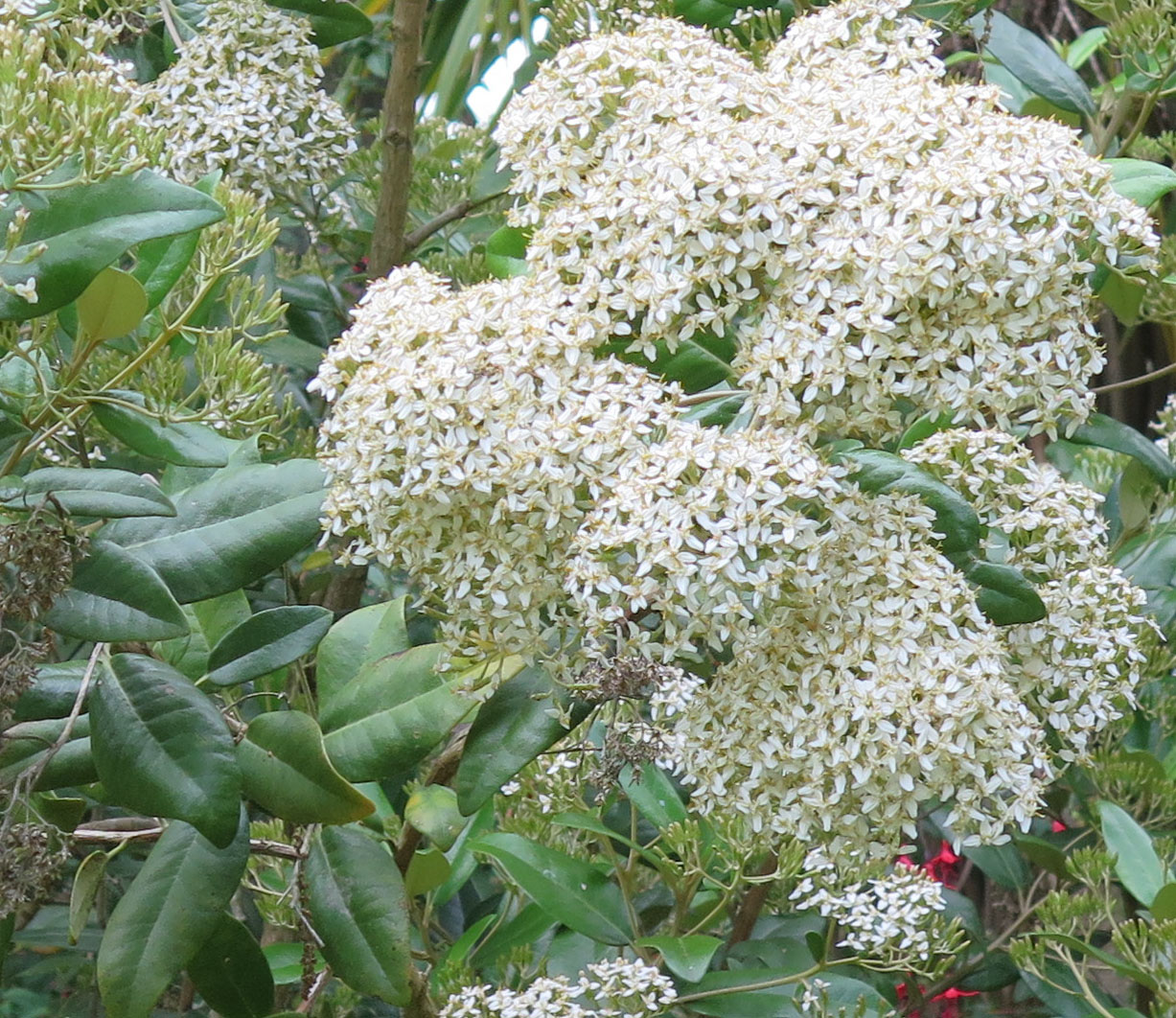Olearia avicenniifolia
Credits
Article from Bean's Trees and Shrubs Hardy in the British Isles
Recommended citation
'Olearia avicenniifolia' from the website Trees and Shrubs Online (treesandshrubsonline.
Genus
Synonyms
- Shawia avicenniifolia Raoul
Infraspecifics
Other taxa in genus
- Olearia arborescens
- Olearia argophylla
- Olearia chathamica
- Olearia cheesemanii
- Olearia colensoi
- Olearia erubescens
- Olearia frostii
- Olearia furfuracea
- Olearia × haastii
- Olearia ilicifolia
- Olearia ilicifolia × O. moschata
- Olearia insignis
- Olearia lacunosa
- Olearia ledifolia
- Olearia macrodonta
- Olearia × mollis
- Olearia moschata
- Olearia nummulariifolia
- Olearia odorata
- Olearia paniculata
- Olearia phlogopappa
- Olearia ramulosa
- Olearia rotundifolia
- Olearia × scilloniensis
- Olearia semidentata
- Olearia solandri
- Olearia traversii
- Olearia virgata
An evergreen shrub or small tree varying from 8 to 20 ft in height in the wild; young shoots ribbed and clothed with a close, white, scurf-like down. Leaves alternate, oval-lanceolate, tapered towards both ends, pointed or bluntish at the apex, entire, 2 to 4 in. long, 7⁄8 to 13⁄4 in. wide, greyish green and glabrous above, the undersurface furnished with a close, thin, white or yellowish white felt; stalk 1⁄4 to 3⁄4 in. long, grooved and downy like the young shoots. Flower-heads produced in erect, rounded corymbs from the terminal leaf-axils in August and September, each corymb 2 to 3 in. wide and borne on a slender stalk 2 to 3 in. long, grooved and downy. Each flower-head is 1⁄4 in. long, cylindrical, white, the outer bracts erect; there are usually two or three florets in each head, one or two (or sometimes none) of which are ray-florets. Salmon, New Zealand Flowers and Plants in Colour, tt. 109–10.
Native of New Zealand in the South Island, and Stewart Island, up to 3,000 ft altitude. It is one of the hardiest of the olearias, surviving all but the severest winters near London, provided it is given a sheltered position. At Kew it has lived for many years in the outside recesses of the wall of the Temperate House. In the milder parts it has attained a height of 15 ft.
From the Supplement (Vol. V)
O. albida Hook. f. – In the typical state of this species, as defined by Allan in Flora of New Zealand, the leaves are 3 to 4 in. long, slightly undulate, and there are three to ten florets in each head. In var. angulata (Kirk) Allan (O. angulata Kirk) the leaves are shorter, 13⁄4 to 3 in. long, more leathery and undulate; flower-heads usually with five or fewer florets. This is reported to be hardier than the typical state.

